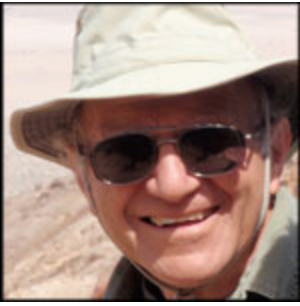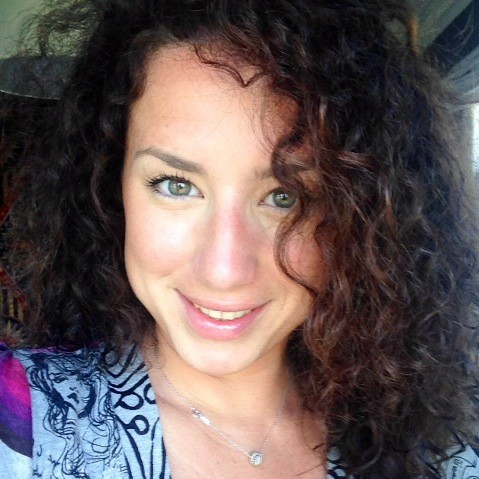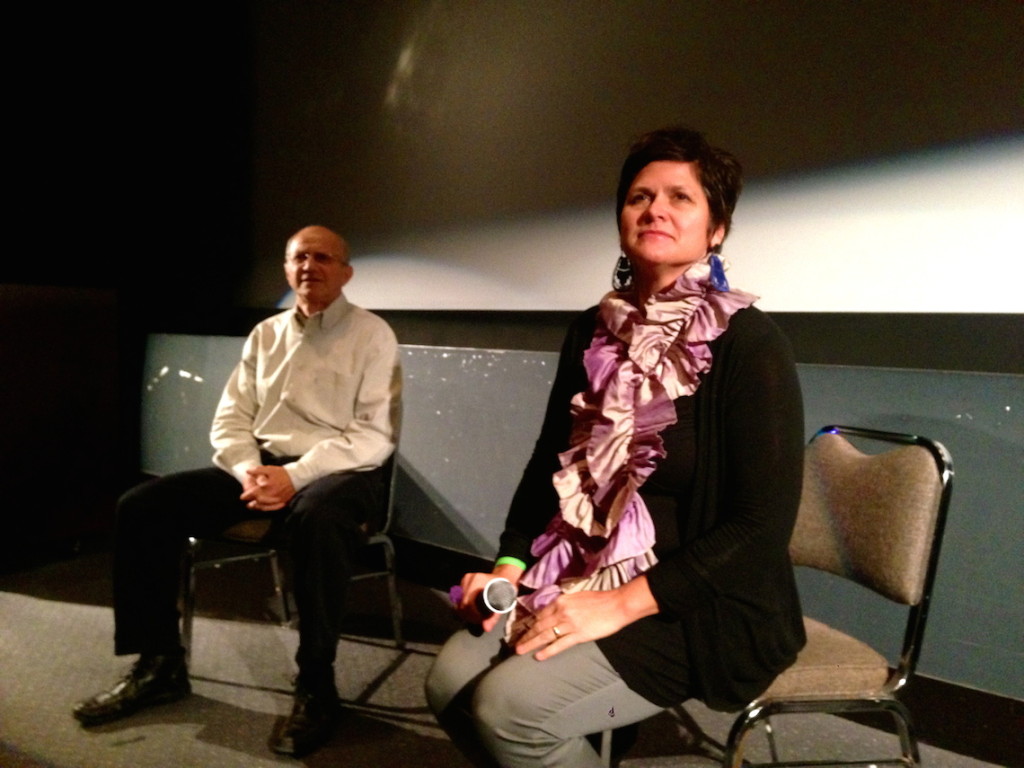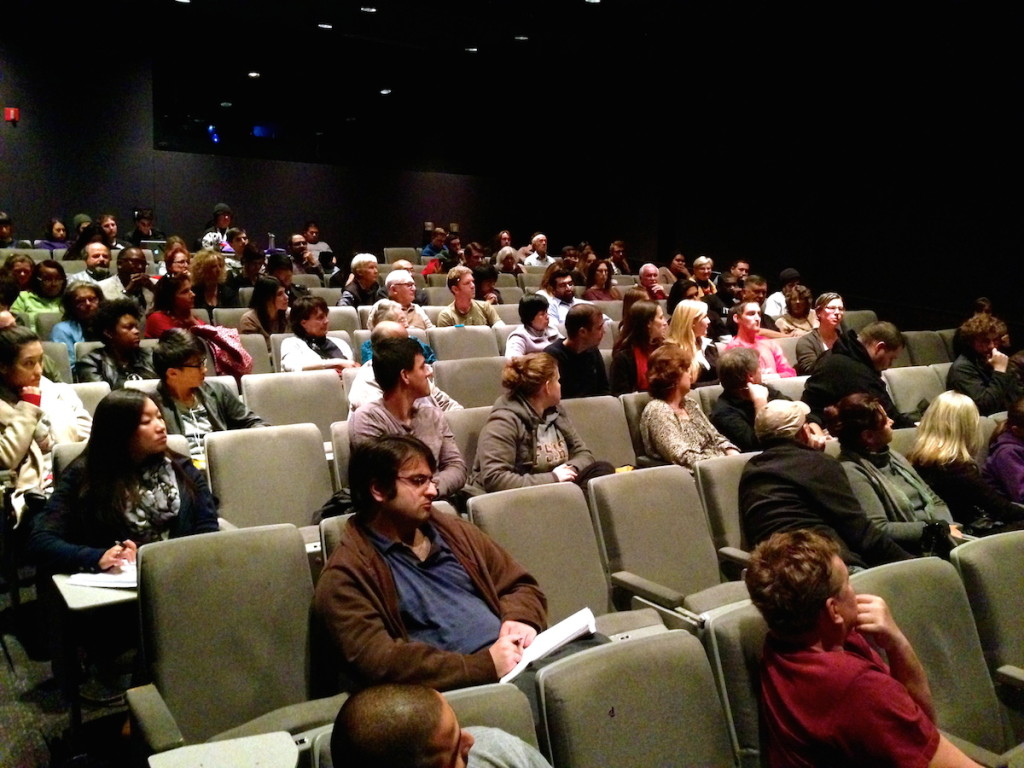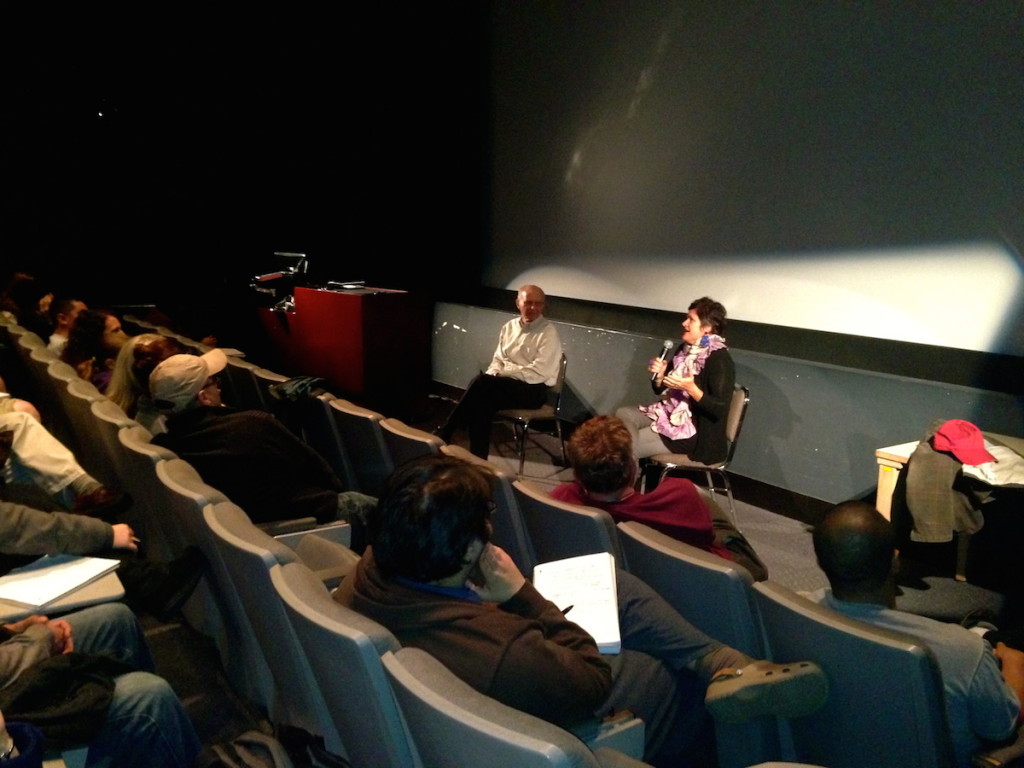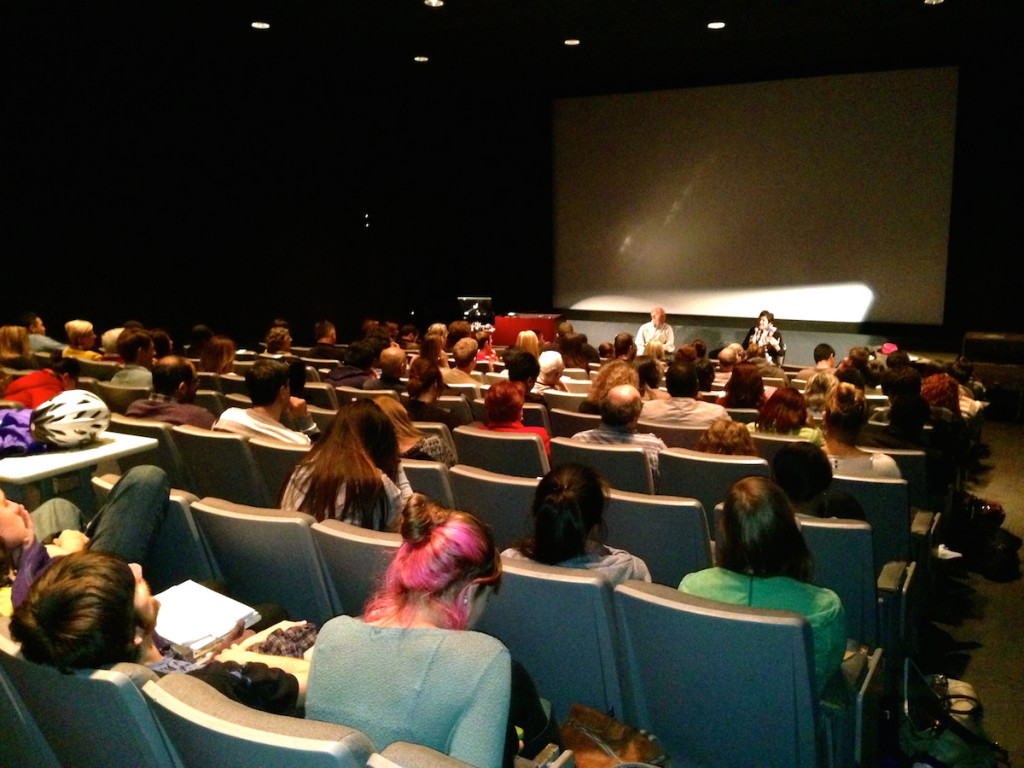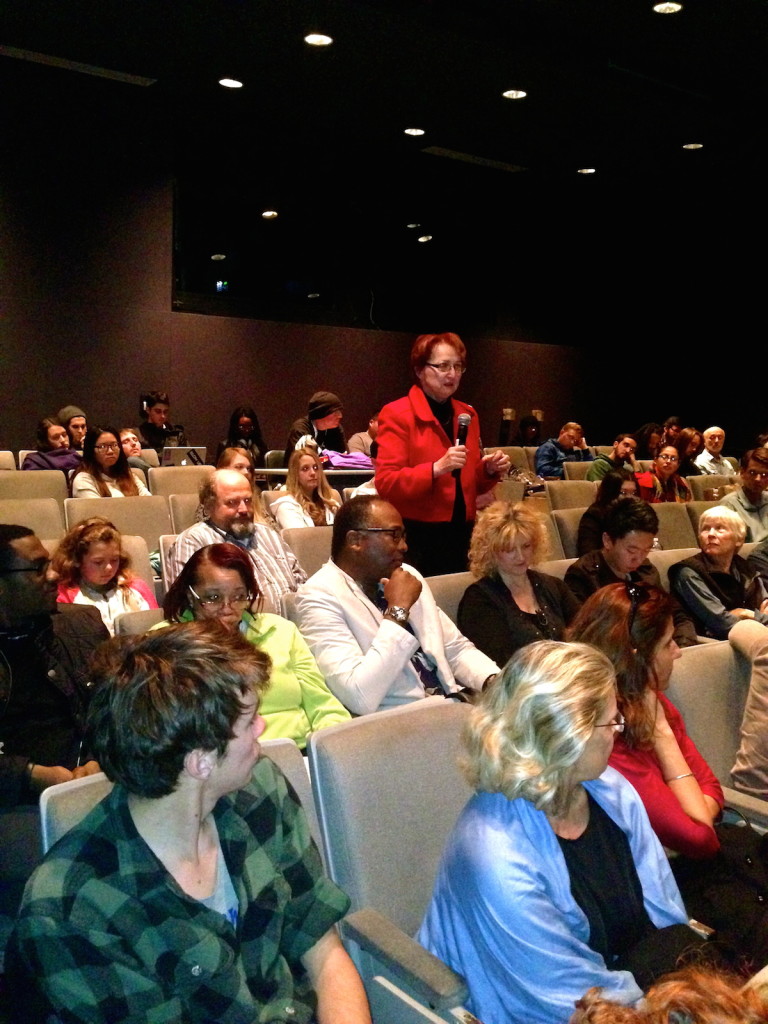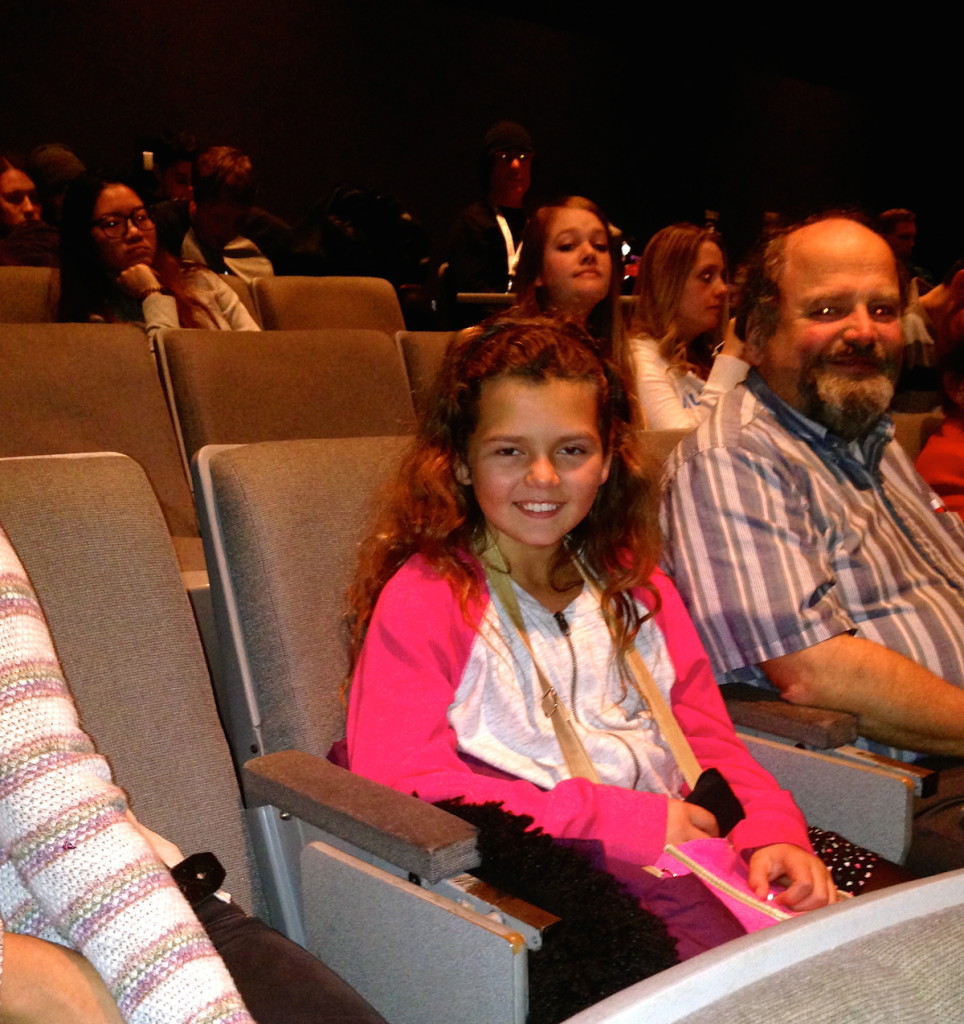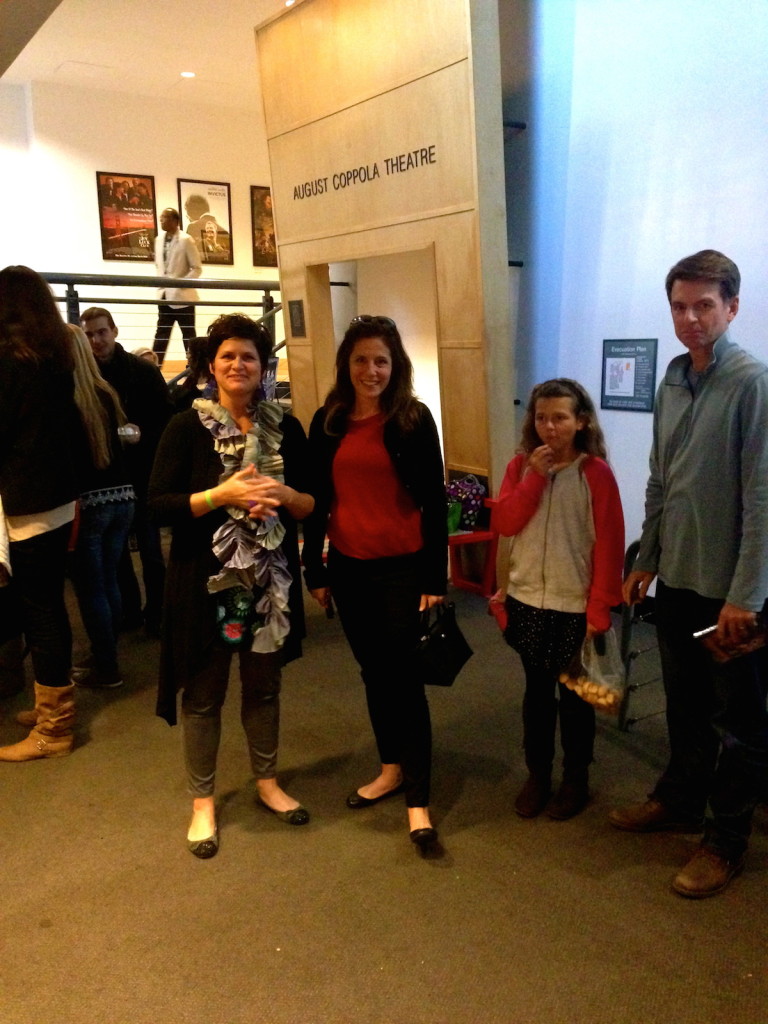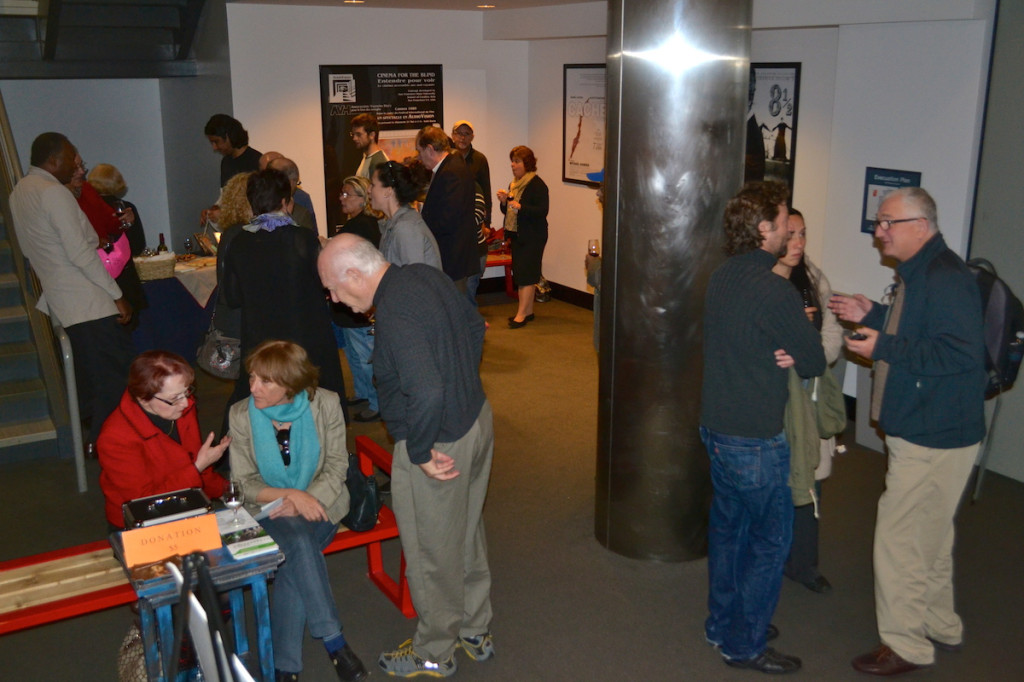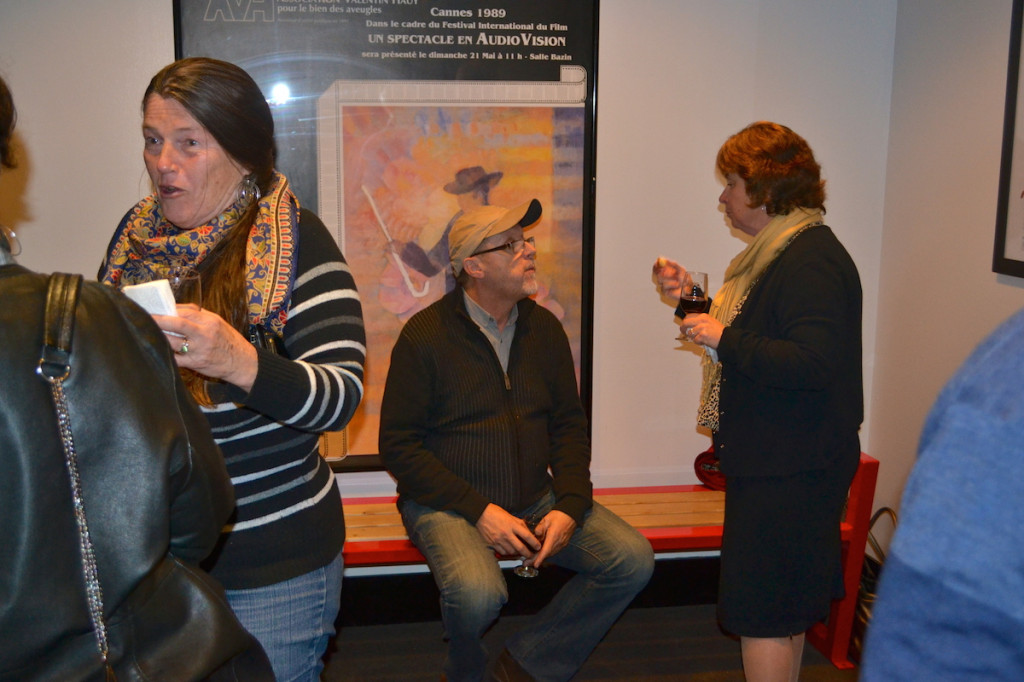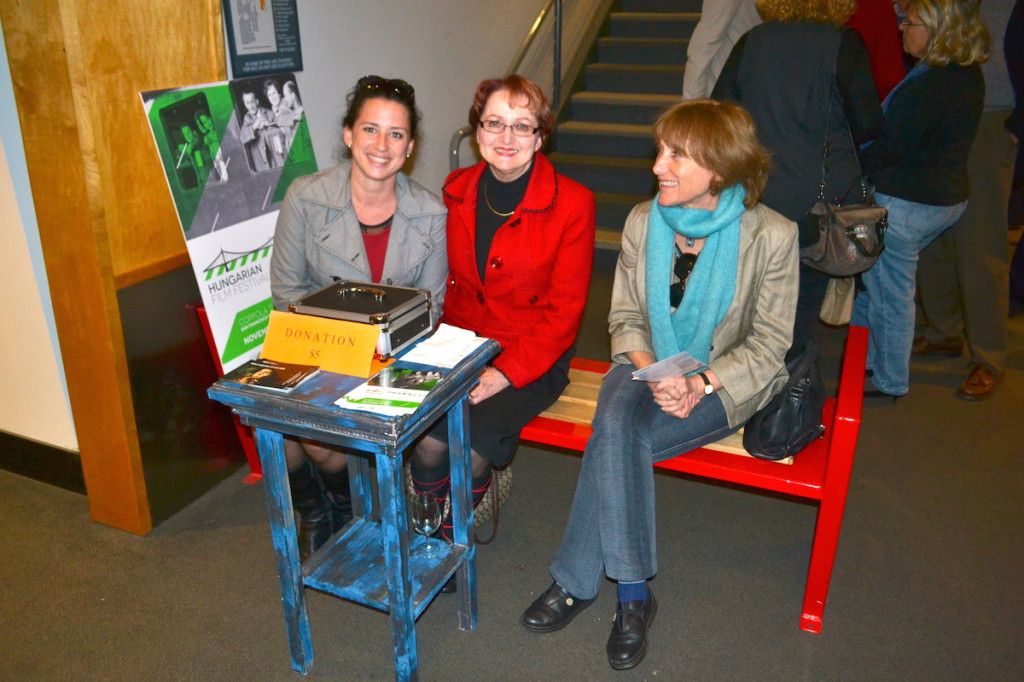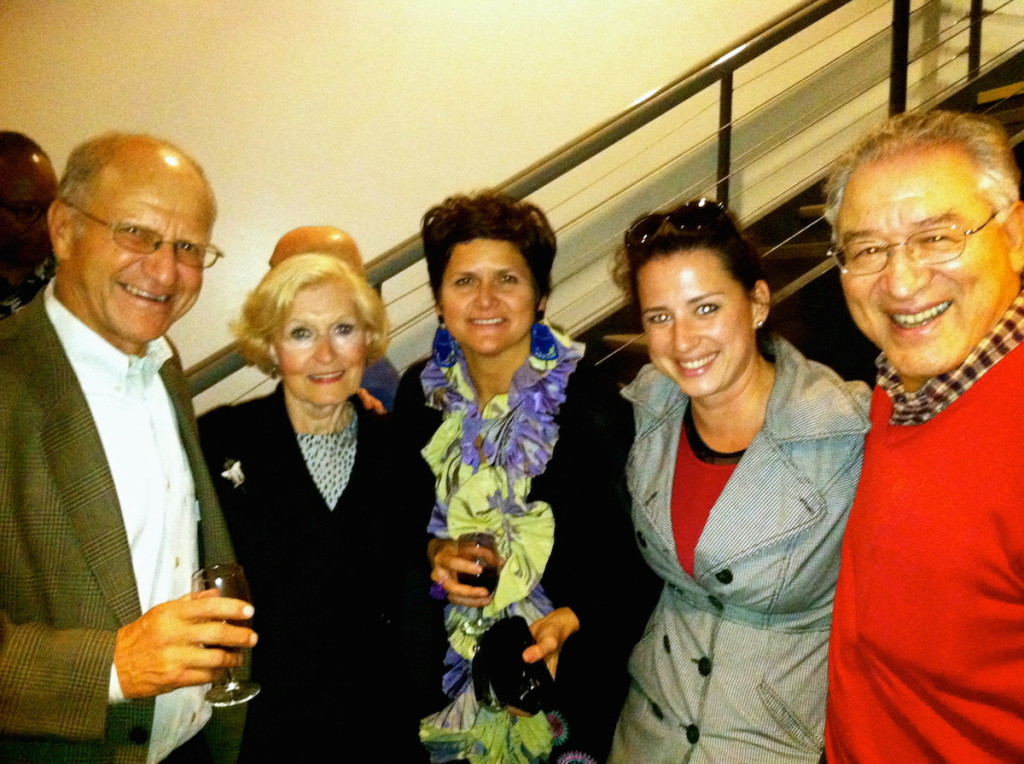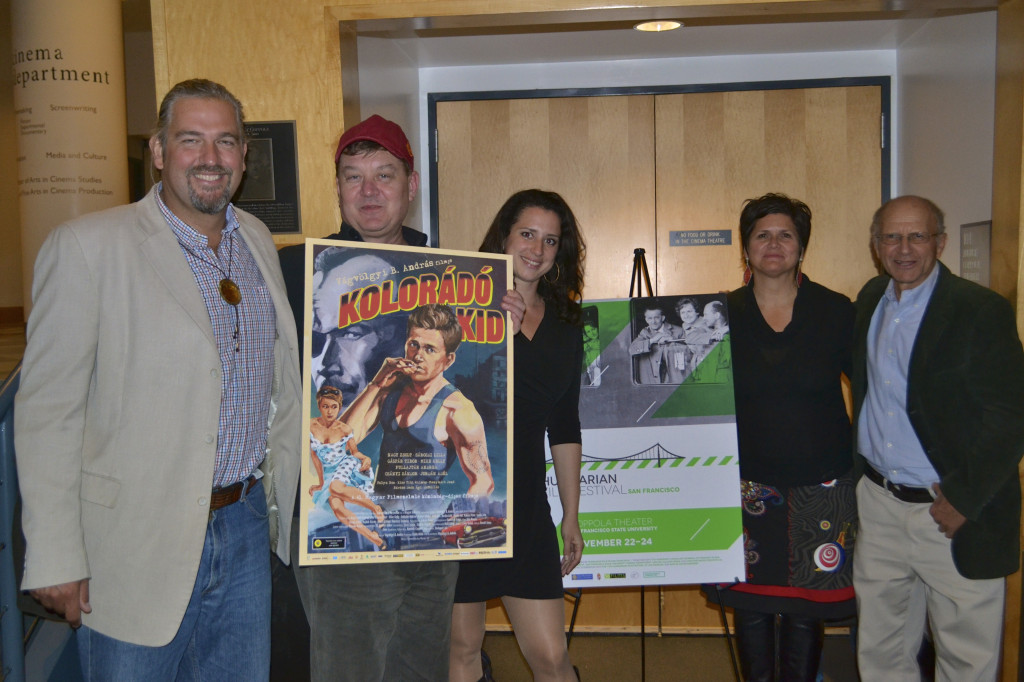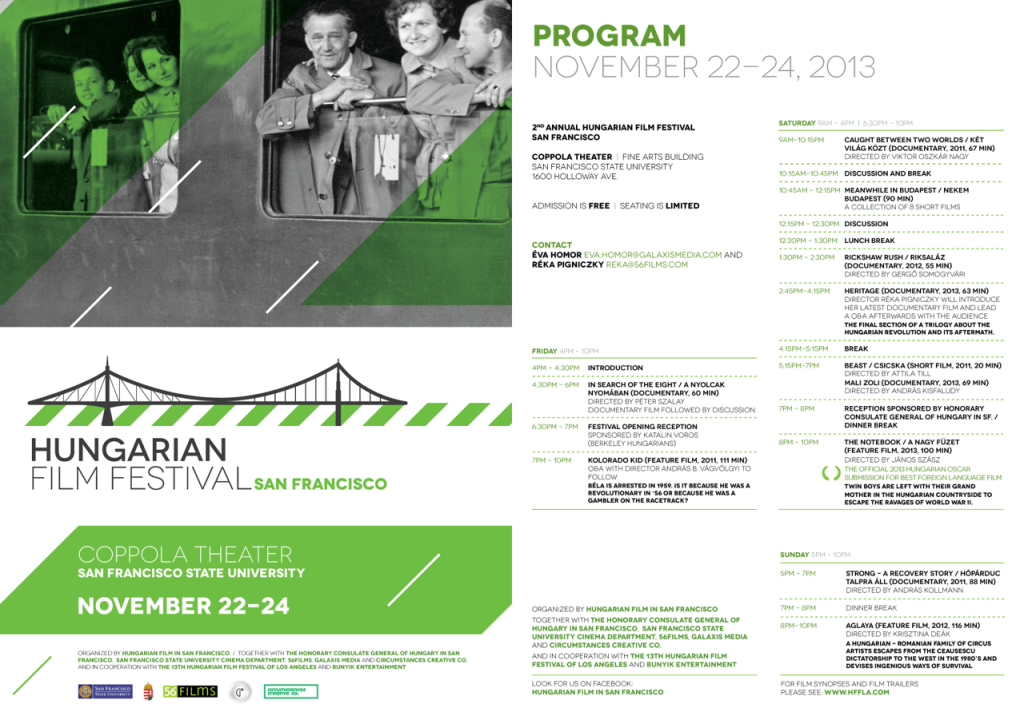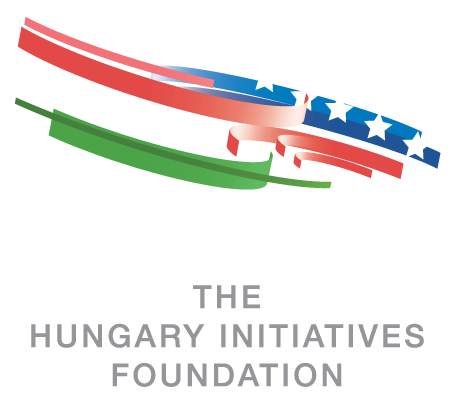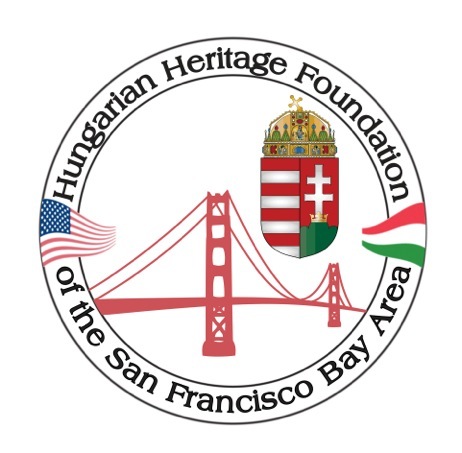Hungarian Film in San Francisco (HFSF) is part of Central European California Cultural Institute (CECI) dedicated to presenting a selection of contemporary Hungarian feature films, live action shorts, documentaries, and animation. In the past HFSF has worked with the Hungarian Film Festival taking place in Los Angeles. It is part of the curriculum of the School of Cinema at San Francisco State University, and as such it offers a unique combination of public access and higher education.
CECI, a San Francisco-based NGO, organizes cultural exchange between the two regions, having originated with a film festival and aimed to develop into a wide array of cultural events. The mission of CECI, founded and run by three Hungarian-Americans, is to promote Hungarian and other Central European film, theater and music events in California. The film festival is one of the main current cultural activities of CECI. The founders intend the organization to branch into the other arts in the near future.
Both the festival and the cultural institute are the creation of three Hungarian-Americans, professor Steven Kovacs, documentary filmmaker Réka Pigniczky and producer Éva Karafiáth-Homor.
In 2012, we hosted our first guest. Director Benedek Fliegauf accompanied his “Just the Wind” (the official Hungarian entry to the Academy Awards) to screen at SFSU in front of an audience of some 150 students and general public.
In 2013 we received private funding for the appearance of director Andras Vagvolgyi to present his feature “Kolorado Kid.” HFSF founder Reka Pigniczky volunteered to show and discuss her latest film “Heritage”. The Q & A that followed the two directors’ appearance were the highlights of the festival. Evening screenings were attended by 130 viewers.
In 2014 CECI received an “Art and Culture” grant approved by The Hungary Initiatives Foundation to support the 3rd Annual Hungarian Film Festival in San Francisco.
In 2015, at the 4th Hungarian Film Festival we made the first audience award to “Afterlife / Utóélet” by Virág Zomborácz.
In 2018 the 5th Hungarian Film Festival will take place on November 2-3 at our usual venue, the August Coppola Theatre, SFSU. In recognition of our pioneering quality programs, this year we received a grant from The Hungary Initiatives Foundation. With their support we have invited Academy Award winner director Kristóf Deák, award-winning director Attila Szász, and Zsuzsanna Gellér-Varga documentary filmmaker to present and discuss their work. We welcome guests to enjoy the movies and the Q&A afterwards. All screenings are free and open to the public.
Central European California Cultural Institute, The Hungary Initiatives Foundation, San Francisco State University, Hungarian National Film Fund, 56Films, The Heritage Foundation.“I received an email from a Hungarian club in San Francisco inviting me to this festival, and I thought I should really come – I haven’t seen a Hungarian film in 10 years.” (Viktor Perkala, San Francisco)
“I used to work in the film business in Hungary and now I live here. So for me this is a great continuation of Hungarian film culture, since I can’t be at home now to watch films.” (Sövény Tímea, San Francisco)
Mission
To promote Hungarian and other Central Eastern European films in the SF Bay Area. We are cultural pioneers for films in general, and Hungarian and other regional films especially.
Future
Cultural programs and events initially throughout the San Francisco Bay Area, eventually in the entire state of California. Such programs and events may include art exhibits, musical presentations, theatrical and dance performances, and conferences that showcase the diverse traditions of Central Europe. Lectures and classes focused on educating the public about the rich and diverse culture and arts of Central Europe.Youth activities promoting charitable and educational purposes. Publication of educational information on a website.
Bio
Professor Steven Kovacs, the formerly Chair of SFSU Cinema Department, began as a film historian, writing the book From Enchantment to Rage: The Story of Surrealist Cinema. He started teaching at Stanford, where he co-produced the documentary Arthur and Lillie, for which he received an Academy Award Nomination. He worked as head of production for Roger Corman’s New World Pictures (1977-79). He has produced, written and directed a number of features, including The Lady in Red, On the Line, ’68, and Angel Blue.
He was invited to chair the SFSU Cinema Department in 1990 and has taught there ever since. He has written criticism on art, film, and politics, poetry and fiction. He has taught a wide range of courses, including screenwriting, directing and national cinemas, particularly European and Latin American. He was a Fulbright Fellow at the Hungarian Academy of Theater, Film and Television in 2002-2003.
From 2013 he is a co-Founder, Chairman of the Board and President of Central European California Cultural Institute, a San Francisco-based NGO which organizes cultural exchange between the two regions. The mission of CECI is to promote Central European film, theater events in California.
Steven earned a B.A. in History from Yale and a Ph.D. in Fine Arts from Harvard.
Filmography
“Angel Blue” (Producer, Director, Writer), 1998
“’68″ (Director, Writer), 1988
“On the Line,” (Producer), 1985
“Einstein: The Man Behind the Genius” (Producer, Director), 1982
“The Lady in Red” (Producer) 1979
“Arthur and Lillie” Documentary (Producer) 1975
Bio
Eva began her film career after high school and graduated from university with a bachelor’s degree in communications and film in Budapest, Hungary. She worked as a Producer Assistant, Unit/ Production Manager for ten years in Hungarian and International feature films and commercials and achieved the title of Line Producer in international commercials. She has a screenwriter and electrician skills. Her university project short film “Aqua” (directed by David Spah) won the “best screenplay” award at the 2006 San Francisco International Short Film Festival. She organized Moveast International Filmfestival for 4 years in Hungary, Pécs. From 2013 she is also a co-Founder and Board of Director of Central European California Cultural Institute, a San Francisco-Budapest based NGO which organizes cultural exchange between the two regions. The mission of CECI is to promote Central European film, theater and cultural events in California. Together with her husband as members of the American – Hungarian community she is volunteering as an organizer in the Neumann Society. Her aim is to help to spread Hungarian culture in the US and connect Hungarians with the diaspora in the US.
Filmography
Producer:
2010 Eletrichix (short – co-producer)
2006 Aqua (short – producer)
Production manager:
2010 Whatever Floats Your Boat (short – production manager)
2009 Prank (feature – unit manager)
2005 The real Santa (feature – unit manager)
Screenwriter:
2010 Electrichix ( short – co-screenwriter)
2006 Aqua (short – co-screenwriter)
Art department:
2008 John Adams (TV Mini-Series – art department coordinator – 2 episodes)
– Reunion (2008) … (art department coordinator: Hungary)
– Don’t Tread on Me (2008) … (art department coordinator: Hungary)
Second Unit Director or Assistant Director:
2008 Nyugalom (feature – second assistant director)
2006 Ballada (short – assistant director)
Miscellaneous Crew:
2006 Fekete fehér (TV Movie – production assistant)
2005 The Porcelain Doll (TV Movie – production assistant)
Actress:
2008 Nyugalom ( feature – Theatre director’s assistant)
Bio
Réka Pigniczky is a television journalist, producer and independent documentary filmmaker. She’s worked for the Associated Press Television News for over 10 years, both in New York and Budapest, Hungary. She completed her first feature-length documentary, Journey Home: a story from the Hungarian Revolution of 1956, at the end of 2006. It won awards in Hungary and was invited to screen at a number of international film festivals. She completed her second feature-length documentary, Inkubátor, in 2010, which saw a wide audience in Hungary through a national theatrical release as well as television broadcast, and it enjoyed wide critical acclaim after the Hungarian Film Festival. The film was also voted one of the 25 best films released in Hungary in 2010.
56 Films is actively involved in Hungary’s documentary community, and Réka has taken part in a number of festival juries and international documentary projects. She is also a member of the European Documentary Network (EDN) and the International Documentary Association (IDA).
Réka has an MA in journalism and international relations from Columbia University in New York, and she also has an MA in political science from the Central European University in Budapest. She has a BA in Political Science from the University of California, San Diego.
Réka was born and raised in the U.S. by Hungarian refugee parents and lived in Hungary for 14 years after the Iron Curtain fell, spending the early 1990’s working as a political consultant and volunteer organizer for women’s NGO’s in Hungary. She serves on the board of Blood Mountain Foundation, an international artist residency program based in Budapest. Since 2002, she lives with her family in the San Francisco Bay Area, working as a filmmaker, journalist, cross-cultural events director and proud mother of three bicultural children.
From 2013 she is also the co-Founder and Board Member of the Central European California Cultural Institute, a San Francisco-based NGO which organizes cultural exchange between the two regions. The mission of CECI is to promote Central European film, theater events in California.
Filmography
Kodály on the Cuyahoga (Kodály a Cuyahogán)
2014, Television Documentary (Duna World), 52 min; Lang: Hungarian
Heritage (Megmaradni)
2013, USA/Hungary; Documentary, 63 min.; Lang: English/Hungarian
The Man who Built Shanghai (Hudec László Élete)
2011, USA/Hungary, Documentary Short, 26 min. Lang: English/Hungarian/Mandarin
Inkubátor (Inkubátor)
2009/2010, USA/Hungary; Creative Documentary, 88 min.; Lang: English/Hungarian
Kazár: from the Cradle to the Grave (Kazár: A Bölcsőtöl a Sírig)
2008, Hungary; Ethnographic Documentary, 45 min; Lang: Hungarian
Journey Home: A Story from the Hungarian Revolution of 1956 (Hazatérés)
2006, USA/Hungary; Creative Documentary, 88 min.; Lang: English/Hungarian
The Los Angeles Hungarian Film Festival was held for the thirteenth time this year, with a similar event taking place for the second time in San Francisco. Although “a bit small and a bit yellow,” like the iconic Hungarian orange in the cult classic The Witness, the San Fransisco Festival was no lemon, either. On the contrary! (more…)
actual template
films feed
San Francisco
November 22-24, 2013
Organized by Hungarian Film in San Francisco
together with San Francisco State University Cinema Department, 56 Films, Galaxis Media, Circumstances Creative, Bunyik Entertainment, the Honorary Consulate General of Hungary, and Berkeley Hungarians
in cooperation with the 13th Hungarian Film Festival of Los Angeles
VENUE
Coppola Theater
Fine Arts Building
San Francisco State University
1600 Holloway Ave.
Admission is free / Seating is limited
Contact: Eva Homor (homoreva@galaxismedia.com) and Réka Pigniczky (reka@56films.com)
4-4:30pm Introduction
4:30 – 6pm In Search of the Eight (A Nyolcak Nyomában) dir: Péter Szalay, 60 min. Documentary film followed by discussion.
6:30 – 7:00 Festival opening reception sponsored by Katalin Voros (Berkeley Hungarians)
7pm – 10pm Kolorado Kid (Feature film, 2011, 111 min.)
Q&A with director András B. Vágvölgyi to follow
„Béla is arrested in 1959. Is it because he was a revolutionary in ‘56 or because he was a gambler on the racetrack?”
9:00-10:15 Caught Between Two Worlds (Két világ közt) documentary, 2011, 67 min. Dir: Viktor Oszkár Nagy
10:15-10:45 Discussion and Break
10:45-12:15 Meanwhile in Budapest (Nekem Budapest) a collection of 8 short films, 90 min.
12:15-12:30 Discussion
12:30-1:30 Lunch Break
1:30-2:30 Rickshaw Rush, (Riksaláz) documentary, 2012, 55 min. Dir: Gergő Somogyvári
2:45-4:15pm Director Réka Pigniczky will introduce her latest documentary film Heritage (2013, 63 min.) and lead a Q&A afterwards with the audience.
4:15-5:15pm Break
5:15-7:30pm Beast, (Csicska) 2011, 20 min. Short film directed by Attila Till
Mali Zoli, 2013, 69 min. Documentary film directed by András Kisfaludy
Testfilm, (Kémhatás) An experimental documentary film by Iván Angelusz (2013)
7:30-8pm Reception sponsored by Honorary Consulate General of Hungary in SF.
8:00pm – 10pm The Notebook (2013, 100 min) directed by János Szász
The official 2013 Hungarian Oscar submission for Best Foreign Language film
Twin boys are left with their grandmother in the Hungarian countryside to escape the ravages of World War II.
5pm – 7pm Strong – a recovery story (A hópárduc talpra áll), documentary film directed by András Kollmann (2011, 88 min.)
7pm – 8pm Dinner break
8pm-10pm Aglaya, directed by Krisztina Deák (2012, 116 min)
A Hungarian – Romanian family of circus artists escapes from the Ceausescu dictatorship to the West in the 1980’s and devises ingenious ways of survival.
Coppola Theater
1600 Holloway Avenue
San Francisco
CA 94132
don’t edit this
archive template.
enable this to all years.
FESTIVAL DIRECTORS
Steve Kovacs
Eva Homor eva.homor@galaxismedia.com
Reka Pigniczky reka@56films.com
A DOCUMENTARY? A DANCEFILM? A WEDDING’S STORY? A TOURIST IN BUDAPEST? A KID’S DREAM? YES? A TESTFILM!!
KÉMHATÁS is an artwork to love! It’s not just a film! It’s dancing, it’s singing, it’s a site specific social action, it’s a film about last age videoing. It is an artwork of contradictions! It is an amusing musical with a happy end love story but the same time it is a no-dialog experimental dance film. It is a dream of a child but also a rigorously edited video clip.
There are wildly known actors, dancers, and singers in the film with students and street walkers, even the video-makers themselves appear in the film. The one hour flow is absolutely international but full with allusions to the Hungarian and Budapest culture where every frame is enrooted. Like the title that means Test-Film but as a Hungarian pun it means also Spy-Story. Yes, the cameras are following the action as children lurk the adults.
KÉMHATÁS is an artwork to love! It’s not just a film! It’s dancing, it’s singing, it’s a site specific social action, it’s a film about last age videoing. It is an artwork of contradictions! It is an amusing musical with a happy end love story but the same time it is a no-dialog experimental dance film. It is a dream of a child but also a rigorously edited video clip.
There are wildly known actors, dancers, and singers in the film with students and street walkers, even the video-makers themselves appear in the film. The one hour flow is absolutely international but full with allusions to the Hungarian and Budapest culture where every frame is enrooted. Like the title that means Test-Film but as a Hungarian pun it means also Spy-Story. Yes, the cameras are following the action as children lurk the adults.
Réka Pigniczky’s latest documentary addressing the issues of cultural identity, Heritage portrays the generation who fled Hungary after the Revolution of 1956 and who made their home in the United States. Only a small percentage of this group held onto their Hungarian identity, but for those that did it held a sense of mission. From Hungarian school and scouting to folk dance ensembles and church groups – even sports teams – the parents of this generation instilled Hungarian language, culture and identity into their children through a unique Hungarian “incubator.” Heritage is a collection of interviews with this group of Hungarian refugees and never before seen archive film footage of their first years in the U.S.
Caught between two worlds is a dramatic journey through the characteristic depths of the life of a refugee, which reveals what it feels like to have to start life again, from scratch, in an unknown country. Four languages, four cases of homesickness, four scars, four struggles, but everyone has but one chance to start again in a foreign country.
In the past few years, the streets of Amsterdam have been inundated with
Hungarian rickshaw taxis. For some of thedrivers it’s a way to express their independence, for others, the only way to support their families. These modern rickshaw drivers leave their homes in search of a new life. Some succeed, others end up on the street. An atmospheric report on east-west migration, and hope and disappointment in our days and our nights.
The film follows Zsolt Erőss, the most successful Hungarian mountain climber of all time, as he recovers over an 18-month period following a dire avalanche accident. In the interests of his improved recovery, his lower right leg had to be amputated. From a seemingly hopeless state, he demonstrates remarkable determination and perseverance
Drávapiski’s mayor, Zoltán Mali submitted a proposal, which was accepted by Parliament in 2008, leading to the creation of the „Usurer law”. He started out to help those who had suffered at the hands of usurers. Within a short time, he found himself confronted with not only the usurer gangs, but also the threatening, corrupt authorities, which repeatedly assisted the usurers.
The members of The Eight, inspired by the painting of the early 20th Century, in particular, French Modern painting, created an artistic congregation. Here, the cream of the literary, musical and fine arts convene. As they prepare for their most important scene, we are offered a glimpse of the background to the group’s organization, the history of three exhibitions, the giddy, intellectual life, which they inhabit, and the Bohemian lifestyle.
A collection of eight short movies, 8 to 15 minutes long each, vaguely interconnected and, above all, with a unifying thread comprised of their depiction of the current reality in the Hungarian capital.
A production under the sign of “Here and Now”, which also works as a manifesto as its authors wish to demonstrate the existence of a new way of producing quality films in Hungary, which are not necessarily “traditional” films, or amateur works aimed at the Internet.
They all graduated in the same year from the University of Theatre and Film Arts of Budapest and decided to pursue one of their ideas from their student days by producing and directing a small-budget collective film centered on the Hungarian capital.
These young filmmakers have already been noticed and rewarded in international festivals: Bálint Szimler, was selected in Cannes in 2010 for the Cinéfondation programme and György Mór Kárpáti was a contender in the short film competition at the Berlinale 2011.
Dániel Bálint, László Csuja, Aron Ferenczik, Erika Kapronczai, György Mor Kárpáti, András Pires Muhi, Attila Pluhár, Gabor Reisz, Péter Szeiler and Bálint Szimler.
István Balogh, is not a rich farmer. He is a man who has total control over his wife, family and his slave. He does everything to guard the family image created by the rigid traditions on his farm in rural Hungary. The characters meet their tragic fate through their close but at the same time extreme relationships. This award winning short film has been inspired by articles, news items and memories of people who have survived such situations.
In Hungary we see the renaissance of “csicskáztatás”, a kind of modern-day slavery. Today we speak about the forced work of homeless people and fallen addicts lacking love and their will as well as the confiscation of their benefits and pensions.
In many cases slave-owners buy their victims cheap from special agents and then force them under inhuman circumstances to work and fully serve the whole family. The worker quickly becomes a slave, a “csicska”. A tragic consequence of this widespread phenomenon is that the acceptance of the slave by the family can mean his very survival.
In these archaic communities there is no clear distinction between the slave and the family members. These cruelly exploited people, unable to take part in everyday struggles for life, become second-class members of the community. Thousands of people are estimated living in slavery in Hungary ten years into the third millennium
